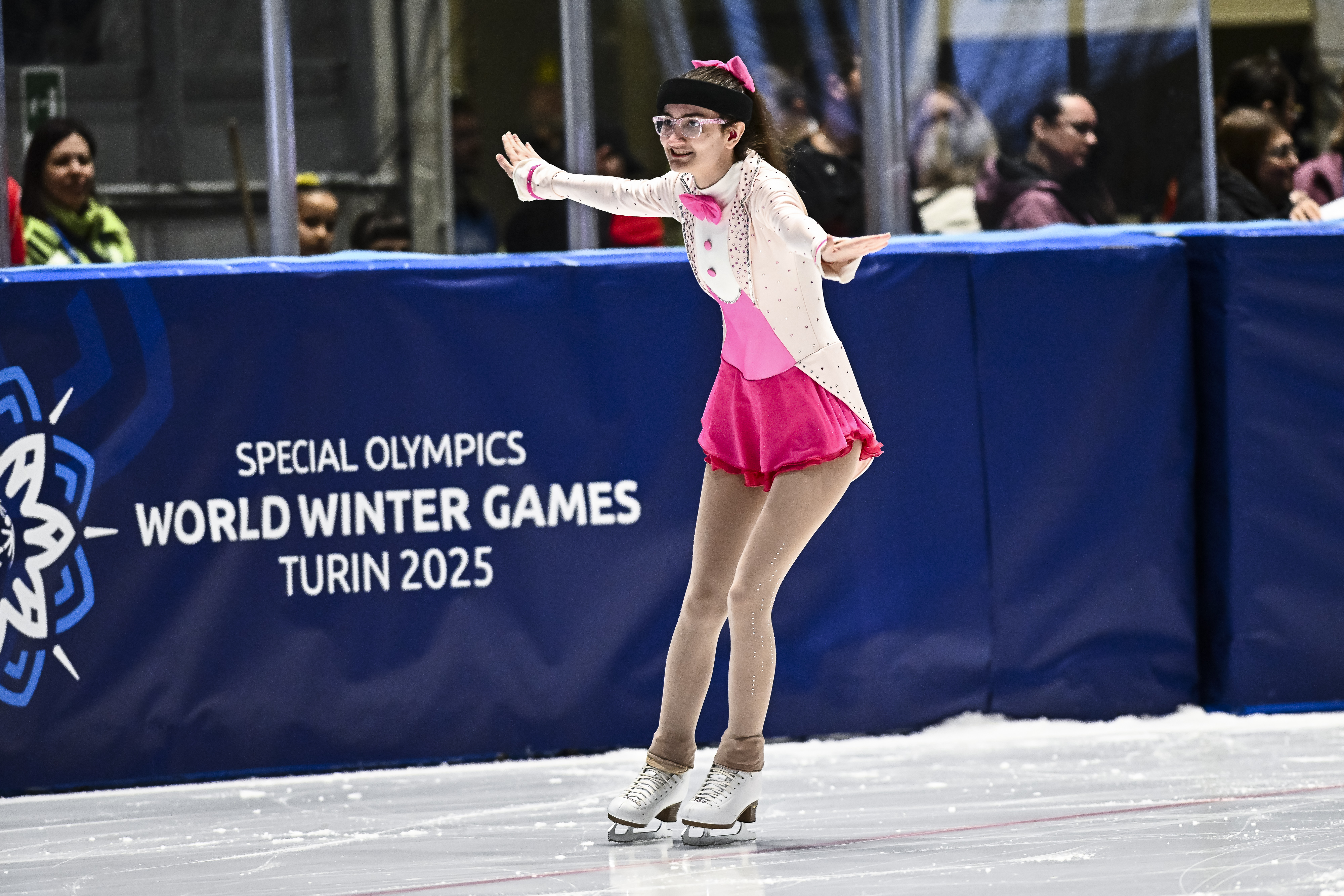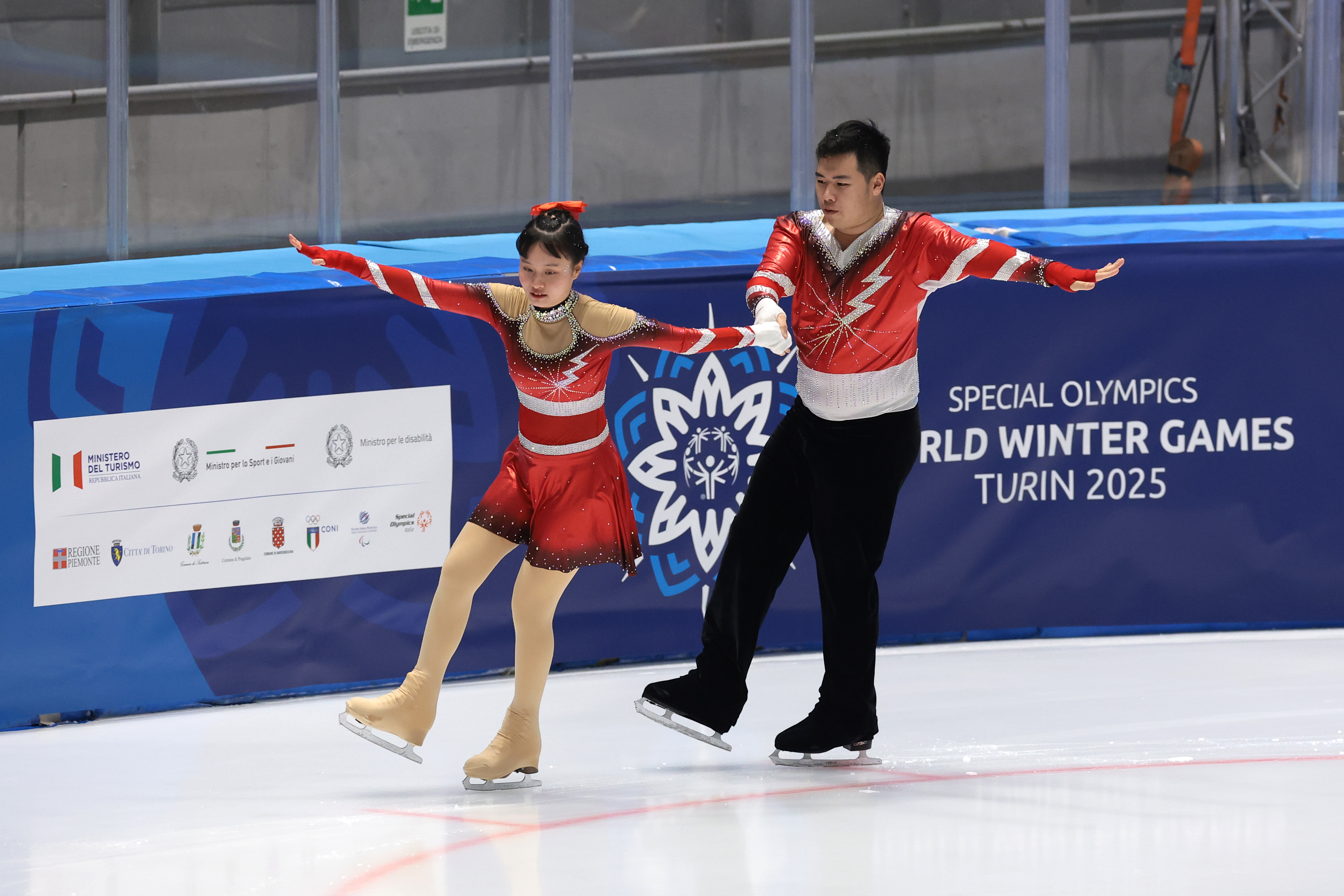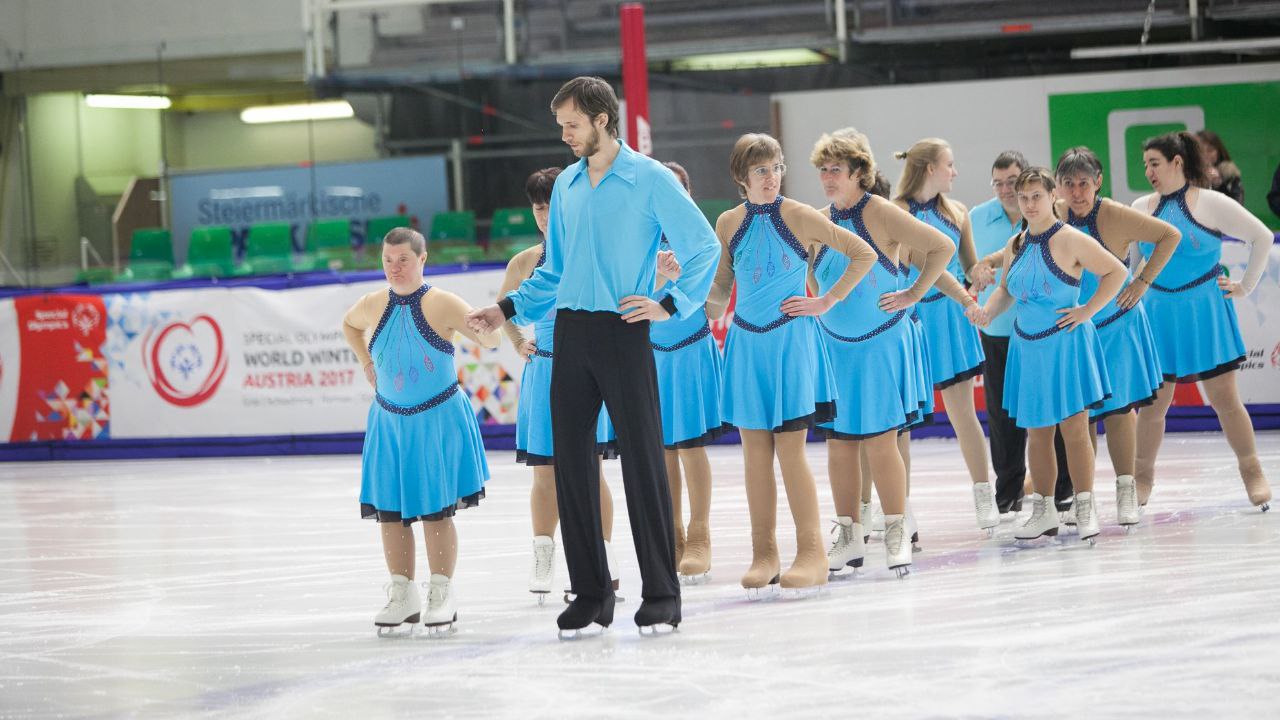
Adaptive/Special Olympics Competitions
-
Regional: Local competitions where athletes compete within their community.
-
Provincial: Larger competitions with athletes from different regions within a province.
-
National: Competitions featuring athletes from across the country, providing a higher level of competition and exposure.
-
International: The highest level of competition, where athletes from around the world come together to compete on a global stage.
These events not only promote physical fitness and skill development but also foster a sense of community, inclusion, and empowerment among athletes. The Special Olympics movement is dedicated to creating a world where every person, regardless of ability, is accepted and celebrated.
Competition Categories:
-
FreeSkate:
-
Description: Skaters perform a full program set to music, incorporating jumps, spins, and other elements. Each level has specific requirements for the length of the music cuts and elements to ensure skaters perform within a standardized time frame.
-
Objective: Combine technical skills with artistic expression to create a cohesive and engaging performance.
-
Recognition: Skaters receive a ranked placement, with the top three receiving medals.
-
-
Ice Dance:
-
Description: Couples perform set patterns and original dances, focusing on rhythm, interpretation, and edge quality. Programs include compulsory dances, rhythm dances, and free dances. Each level has specific requirements for the length of the music cuts and elements to ensure skaters perform within a standardized time frame.
-
Objective: Emphasize timing, musicality, and synchronized movements between partners.
-
Recognition: Skaters receive a ranked placement, with the top three receiving medals.
-
-
Pairs FreeSkate:
-
Description: Pairs perform lifts, throws, synchronized spins, and side-by-side jumps within a program set to music. This discipline requires a high level of coordination and trust between partners. Each level has specific requirements for the length of the music cuts and elements to ensure skaters perform within a standardized time frame.
-
Objective: Showcase harmony, unison, and difficult pair elements.
-
Recognition: Skaters receive a ranked placement, with the top three receiving medals.
-
-
Synchro:
-
Description: Teams of 6-16 skaters perform a choreographed program set to instrumental or vocal music. They perform five required elements; additional elements may be used for transitions, but are not scored. The program must be completed within 3 minutes and 30 seconds, with a 10-second grace period.
-
Objective: Demonstrate teamwork, musicality, and execution of standardization elements in a synchronized group performance.
-
Recognition: Teams receive a ranked placement, with the top three receiving medals.
-
Equipment: For those who have not completed Stage 5 of CanSkate, a CSA-approved helmet is required during competition.
Event Recognition: All events receive a ranked placement, with the top three participants receiving medals.
Fees:
-
Event Fees: Skate Canada lists a fee for each event (Programs, Elements, Improv, Team, etc.).
-
Coaching fees: The coach charges a fee for the time spent with the skater at the event, which varies per coach. This fee can include time, mileage, hotels, meals, etc., depending on the coach's charges.
- Admission Fee: Each day an admission fee is required for all spectators.
Special Olympics Winter Sport Canada - Figure Skating Rules: For Domestic events at the Regional, Provincial, and National levels.
SPECIAL OLYMPICS COMPETITION INFO
Special Olympics Resource Page: For information about Figure Skating in Special Olympics competitions, practice plans and assessment sheets, ISU judging, and more.
Special Olympics Badge Program, Training, and Competition Information: Resource Guide
Special Olympic Competition Categories (Skate Canada)
| Singles FreeSkate | Dance | Pairs FreeSkate | Synchro |
|---|---|---|---|
| Level 1: CanSkate Stage 1-3 | Introductory: On STAR 1 Dance Elements | Level 1: Min. Level 3 FreeSkate | Level 1: Beginner - Intermediate Skaters |
| Level 2: CanSkate Stage 4-6 | Level 1: Passed STAR 2 Dance | Level 2: Min. Level 4 FreeSkate | Level 2: Intermediate - Advanced Skaters |
| Level 3: Completed CanSkate Stage 6 | Level 2: Passed STAR 3 Dance | Level 3: Level 4 FreeSkate + | |
| Level 4: Have not mastered all jumps | Level 3: Passed STAR 4 Dance | ||
| Level 5: Have not mastered double jumps | Level 4: Passed STAR 5 Dance | ||
| Level 6: Working on double jumps | Level 5: Passed STAR 6 Dance | ||
| Open: Completed STAR 6 FreeSkate | Level 6: Passed STAR 9 Dance | ||
| Adult Masters 1/2: At or below Stage 6 CanSkate | |||
| Adult Master 3/4: Single jumps only |
Special Olympics Competition Categories (Badge Program)
| Singles FreeSkate (Separate FreeSkate Badges) |
Ice Dance (Separate Dance Badges) |
Pairs FreeSkate (Separate Pairs Badges) | Synchro |
| Level 1: Badge 1-5 | Level 1: Dutch Waltz, Canasta Tango or Rhythm Blues |
Level 1: Badge 1-2 | Level 1: Fwd only |
| Level 2: Badge 6-9 | Level 2: Swing Dance, Fiesta Tango or Cha Cha | Level 2: Badge 1-3 | Level 2: Fwd & Bwd, Change of direction |
| Level 3: Badge 10-12 | Level 3: Ten Fox, Willow Waltz or Hickory Hoedown | Level 3: Badge 1-4 | |
| Level 4-6: Badge 1-12 + Additional Elements | Level 4: Fourteen Step, European Waltz or Foxtrot | ||
| Level 5: Tango, Rocker Foxtrot and American Waltz | |||
| Level 6: Starlight Waltz, Kilian, Blues and Paso Doble |
For a printable pre-made checklist for competitions: Competition Day Guide
Or, check out the "Competition Information" tab for an idea of what to bring and expect!










